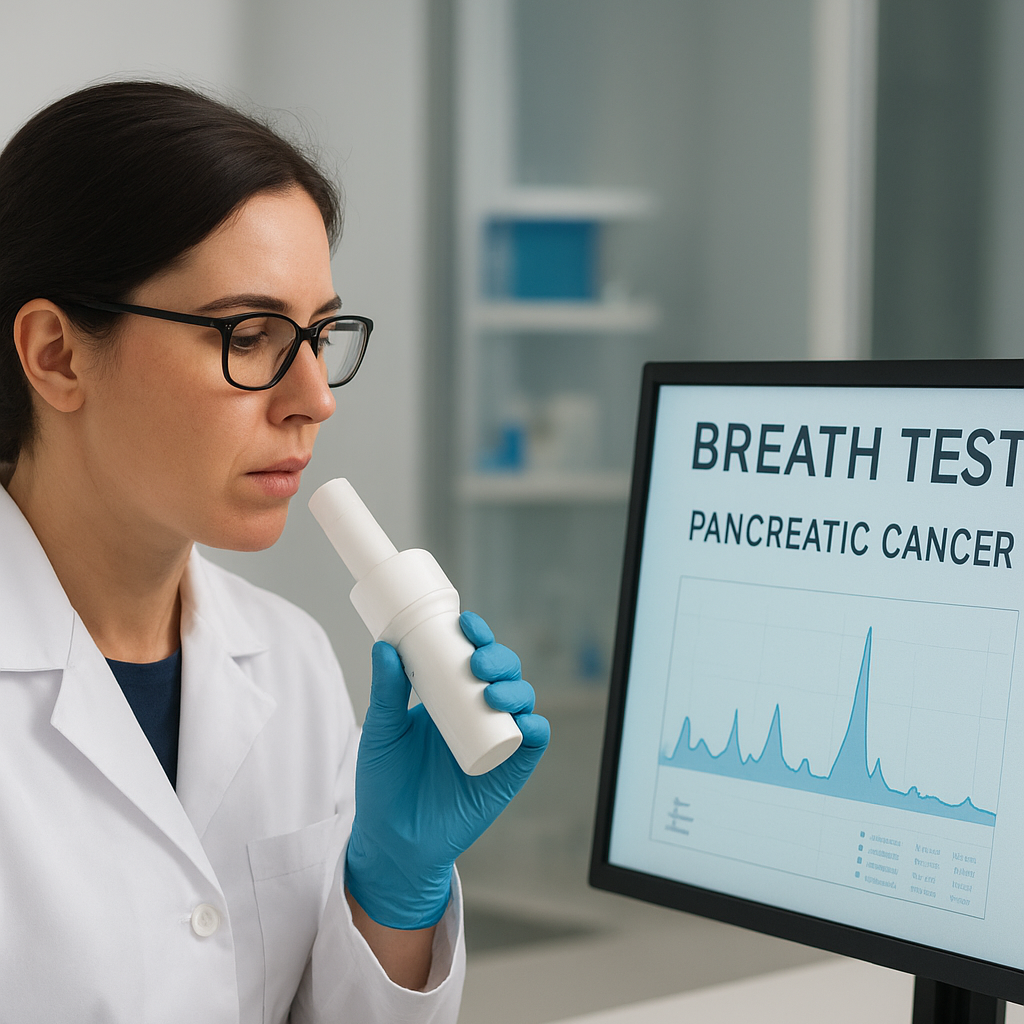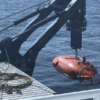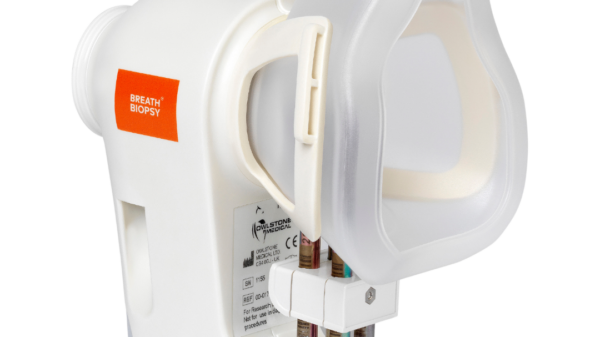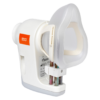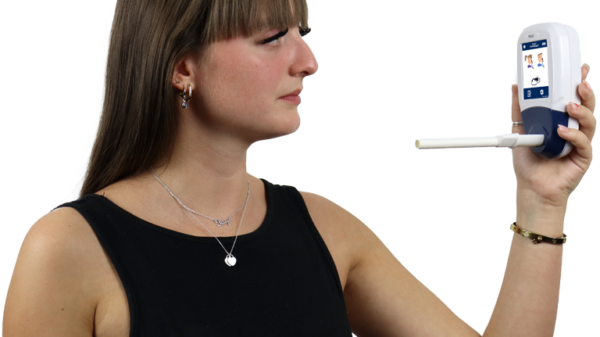British researchers have developed a breath test capable of detecting pancreatic cancer, often called the “silent killer,” in its early stages.
Announced on Friday, this new method could offer a simple, non invasive, and low cost diagnostic option for a cancer type that is notoriously difficult to identify before it advances.
The study, led by Imperial College London in collaboration with the charity Pancreatic Cancer UK, analyzes volatile organic compounds (VOCs) in a patient’s exhaled breath. Preliminary research involving around 700 participants showed strong accuracy, and the project has now expanded to 6,000 people across 40 UK hospitals.
Patients provide a breath sample by exhaling for approximately 30 seconds. The sample is then analyzed, and results are typically available within three days. Based on the findings, patients may be referred for imaging tests or further examinations.
Pancreatic cancer often produces no symptoms in its early stages, which contributes to late diagnoses. In the UK, 62 per cent of patients are diagnosed at stage four. Common symptoms usually appear only after the disease has progressed. Consequently, the five year survival rate remains under 5 per cent.
The condition ranks as a major cause of cancer mortality worldwide. According to the 2023 Korean National Statistical Office report, pancreatic cancer ranks fifth for men and third for women, following lung and colorectal cancers.
Medical experts advise early testing for people experiencing unexplained weight loss or sudden onset diabetes. Furthermore, they hope this breath test could enable earlier detection, giving patients a better chance of effective treatment.
Read more: Breath Diagnostics pioneers novel lung cancer breath test
Read more: Breath Diagnostics takes aim at lung cancer with One Breath
Present diagnostics are inadequate
Currently, diagnosing pancreatic cancer is difficult because early stage symptoms often go unnoticed. Most patients are diagnosed only after the disease has advanced, limiting treatment options. The standard of care begins with a thorough medical history and physical examination. Doctors look for signs such as unexplained weight loss, jaundice, abdominal pain, or new onset diabetes.
Blood tests are usually the next step. Physicians measure tumour markers, most commonly CA19-9, which may indicate pancreatic cancer. However, elevated levels are not definitive, as other conditions can cause increases. Consequently, further imaging is typically required. Companies such as Roche (OTCMKTS: RHHBY) and Abbott Laboratories (NYSE: ABT) provide advanced laboratory platforms for these blood tests, helping improve detection reliability.
Imaging techniques include ultrasound, computed tomography (CT), and magnetic resonance imaging (MRI). CT scans provide detailed pictures of the pancreas and surrounding structures, helping doctors assess tumour size.
MRI offers additional soft tissue detail, while endoscopic ultrasound allows examination from inside the digestive tract. Furthermore, endoscopic ultrasound can guide a fine needle biopsy to collect tissue for confirmation.
Biopsies remain the only way to definitively diagnose pancreatic cancer. Pathologists examine tissue under a microscope to confirm cancer cells. Meanwhile, additional tests such as positron emission tomography (PET) scans may help determine whether cancer has spread.
The process is invasive, time consuming, and stressful for patients. In addition, late detection contributes to poor outcomes, with five year survival rates below 5 per cent. As a result, researchers are exploring less invasive methods, including breath based diagnostics and blood tests, which could detect disease earlier.
Read more: Breath Diagnostics leaders promote their mission at Miami investment conference
Read more: Breath Diagnostics leader speaks at lung cancer education event in Louisville
Non-invasive diagnostics rapidly gaining importance
If successful, the technology could become the first available screening tool for pancreatic cancer. Furthermore, the approach may inspire similar tests for other cancers that are difficult to detect early.
Imperial College London and Pancreatic Cancer UK continue to monitor clinical trial results. Meanwhile, the medical community remains cautiously optimistic. Additionally, the test’s simplicity and speed could transform pancreatic cancer diagnosis in the coming years.
Non invasive diagnostics are gaining importance in cancer care, offering earlier detection with greater comfort and lower costs than traditional methods. Breath Diagnostics, Inc. has developed technology that analyzes hundreds of volatile organic compounds from a single exhale, aiming to detect early stage lung cancer with high sensitivity and specificity. Similarly, Owlstone Medical uses its Breath Biopsy platform and EVOC probes to identify lung cancer through breath samples.
Doctors can find many cancers only after symptoms appear, often limiting treatment options and survival rates, and that’s why these approaches are crucial. By providing a low burden test breath diagnostics could make screening more accessible, allowing routine testing in clinics or community settings. In addition, wider screening could improve early stage detection, potentially increasing cure rates and reducing overall healthcare costs.
.

